![]() The information provided by our expert should not constitute a diagnosis of your condition. Always consult a medical practitioner or healthcare provider for a formal diagnosis. By making use of this content, you agree that ConceiveEasy and the expert assume no liability.
The information provided by our expert should not constitute a diagnosis of your condition. Always consult a medical practitioner or healthcare provider for a formal diagnosis. By making use of this content, you agree that ConceiveEasy and the expert assume no liability.

For women who are trying to conceive, there can be so many different things out there to cause confusion or try to figure out when you are just starting out. However, the single best decision that a woman can make when she is trying to conceive is the decision to track her ovulation. Claim Your 20 Free Ovulation Tests – Click Here
If there was one tiny little thing that could make all the difference, this would definitely be it!
What many women do not know or understand about their own bodies, is that there are just a few days each month where a woman is fertile enough to get pregnant. Having sex on the right days is what makes all the difference when it comes to getting pregnant.
A woman can have sex almost every day of the month if she wants to, but unless she is timing it right to have sex on her most fertile days, it won’t matter – she might be missing those 2-3 most crucial days. And then what? Nothing, no pregnancy.
There is absolutely no way to get pregnant unless a woman is having sex on her fertile days, and there is no way to know when those fertile days are, unless of course, a woman learns how to track her ovulation.
Without ovulation tracking, getting pregnant is really like a shot in the dark!

Ovulation is the time during the month that the egg is released from the body and travels down the fallopian tube to wait to see if it will be fertilized by the sperm. If it is fertilized, the fertilized egg will implant into the uterine wall and an embryo will continue to grow and develop.
If the egg is not fertilized, it will begin to disintegrate and die. The walls of the uterine lining will also begin to shed and about two weeks after ovulation, that is when a woman’s menstrual period will occur.
What most women do not know or understand is that after the egg is released, there is only about a 24 hour period before it begins to disintegration and die.
The egg simply does not live very long after being released. This means that the only way to get pregnant is to have sex near the time when the egg is going to be released so that it doesn’t die before it is able to be fertilized.
The good news about all of this is that once women learn how to do it, they can easily prepare for their fertile days.
Even better news is that sperm are able to live much longer in the body than the egg does. Sperm live on average for about 72 hours in the womb, so they are able to outlive the egg.
What this means is that if women really get serious about tracking their ovulation and knowing their fertile days, they can actually plan to have sex a few days before, and leading up to, the day of ovulation.
This can help to ensure that the sperm is there, ready and waiting, to fertilize the egg when the time is right. This can be an added layer of protection for women who want to get pregnant, and can go a long way towards making things easier on them in the long run.

Once a woman is ready and willing to track her ovulation and find out when her fertile days are, it’s time to get down to business! There are actually several different ways to track ovulation, and the good news is that women can try multiple different ways until they find the one that works best for them.
These methods of tracking ovulation are actually able to all be used in conjunction with one another, so that women can use multiple different methods in order to have the very best chances of knowing when it is their best chance to get pregnant.

For example, one really great way to track ovulation is charting a woman’s basal body temperature. This method is really easy to use, once a woman gets the hang of it, however, it can take a few months to really start to see results.
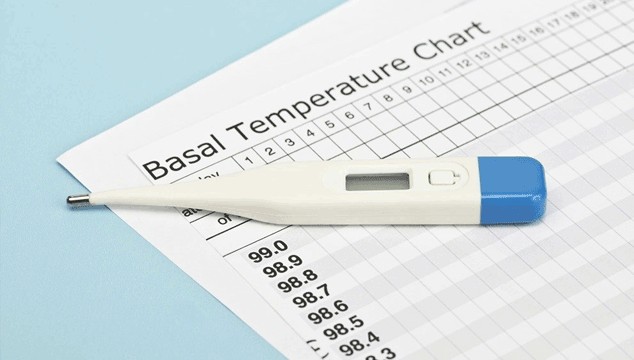
To sum up:
• Buy a basal body thermometer
• Take your temperature same time every morning
• BEFORE getting out of bed
• Chart your temperature on a special BBT chart
• Watch for a slight increase in temps as you near your fertile period
• The temperature spike indicates ovulation has occurred
To start with basal temperature tracking, women can pick up a special basal thermometer online or at their local drugstore. This is a special thermometer that is designed to check a woman’s temperature in a very detailed amount. To use one of these thermometers, a woman will need to track her body temperature every morning, before even getting out of bed. This will be able to give an accurate picture of the temperature of the body at rest.
Then, each day, the temperature will need to be charted on a special chart. Once a woman nears her fertile days, she will begin to see a slight increase in the temperatures she is recording. Once she begins to see that temperature spike, this means that ovulation is usually only a day or two away.
As you can see, this method is very reliable, although it does take some getting used to, as well as some dedication to make sure that the temperature is charted every single day and taken at the same time every single day.
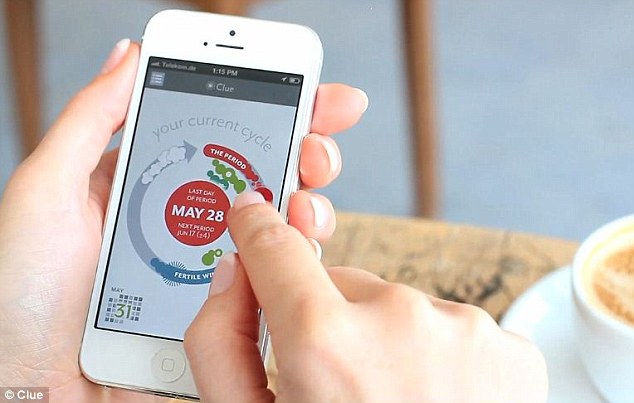

There are other methods of tracking ovulation as well. One of those methods is using a fertility app or fertility tracker on your smartphone. These apps are very handy, because, let’s face it, we all have our phones with us most of the time. However, they can be a double edged sword, since the only information that the app has is actually whatever you enter into it.
So apps are fraught with potential user-error.
The app uses your information such as when you started your last period, when you took an ovulation test, etc, to guess as to when your next fertile period will be. If you forget to enter in data, or enter in data incorrectly, this can be a problem.
Let’s just say that while these apps are handy, there is a lot of room for human error when using them.

Other methods of tracking ovulation include checking the cervical position and also paying attention to cervical mucus. Both of these methods are free and easy to do, but do actually take some getting used to.
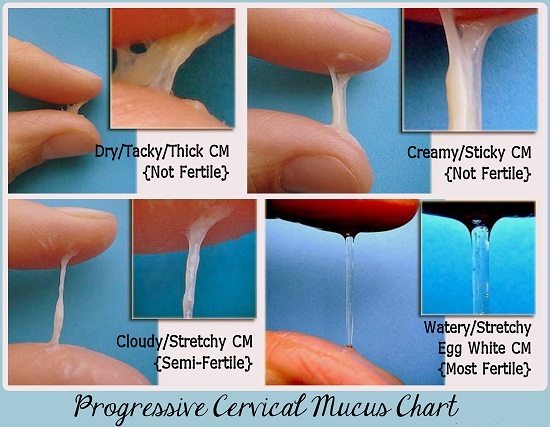
And let’s face it, some women may feel a bit squeamish about getting to know their own cervix and mucus intimately.
![]() Cervical Position – For example, when you feel your cervical position, you can actually feel your cervix. When the cervix is not nearing ovulation, it will feel low, firm and dry, sort of like feeling the tip of the nose. When ovulation time comes around, women will notice that their cervix is higher, and has more a of a soft, wet feeling, similar to the feeling of the lips.
Cervical Position – For example, when you feel your cervical position, you can actually feel your cervix. When the cervix is not nearing ovulation, it will feel low, firm and dry, sort of like feeling the tip of the nose. When ovulation time comes around, women will notice that their cervix is higher, and has more a of a soft, wet feeling, similar to the feeling of the lips.
![]() Cervical Mucus – When it comes to cervical mucus, women can also use it as a guide to when ovulation should occur. Cervical mucus changes dramatically throughout a woman’s cycle, but the optimal cervical mucus that indicates that ovulation is nearing is a cervical mucus that is clear, stretchy and stringy, much like egg whites.
Cervical Mucus – When it comes to cervical mucus, women can also use it as a guide to when ovulation should occur. Cervical mucus changes dramatically throughout a woman’s cycle, but the optimal cervical mucus that indicates that ovulation is nearing is a cervical mucus that is clear, stretchy and stringy, much like egg whites.
In fact, you will find on many message boards and pregnancy groups that women refer to optimal cervical mucus as “egg white cervical mucus” and this can usually indicate that ovulation time is nearing.

All in all, probably the easiest and most common way for women to track their fertile days and know when their ovulation is going to occur is through the use of ovulation predictor kits or ovulation predictor test strips.
We will first go over what ovulation predictor tests are, and then we will explain the difference in ovulation test kits and simple ovulation test strips.
First of all, it is important to remember that ovulation tests are much like home pregnancy tests. If a woman has used a home pregnancy test in the past, she will most likely have at least a general idea of how an ovulation test will work.
The ovulation tests uses a woman’s urine to test the levels of LH or Luteinizing Hormone in a woman’s body. Once the test picks up on a “surge” of the LH hormone, that usually indicates that ovulation is coming near.
Each ovulation test will have both a “test” line and a “control” line. The control line will stay the same darkness no matter when a woman uses it during her cycle. This is the line that will need to be “matched” in order to indicate when ovulation is near. The test line, is just that, the line that tests the urine.
Once the test line reaches the same darkness or darker than the test line, that is considered a “positive” ovulation test.
This usually indicates that ovulation will occur within about 24 hours from the time of the positive test. It is also important to remember that the LH surge in the body can happen very quickly, so when a woman thinks that she is nearing her fertile time, she might even decide to test twice per day, or even multiple times per day, so that she doesn’t miss the positive ovulation test. Missing a positive ovulation test can really throw off a woman’s fertility tracking and put her back at square one.
To sum up:
• Begin taking your ovulation predictor kit by Day 10/11 of your cycle
• Insert OPK direct into the middle of your stream of urine
• Lay flat for 1-5 minutes, then read results
• A control line will show up dark for all test results
• The second test line will show up only if the LH hormone has been detected
• OPK test lines usually start faint, darkening until ovulation is reached
• Take an OPK every day until 2 dark lines appear
• Once 2 dark lines appear, it is time for intercourse!

For women who feel like they may not need a full ovulation predictor (midstream) kit, ovulation test strips may be a good option. These strips are the same strips found in ovulation predictor kits, but come with just the strips themselves. Much like pregnancy test strips.
A test strip is about 2 inches long, with a short space for urine, room for 2 lines, and a colored place to grasp it.
These strips can be found at local drugstores and big box stores, but probably the most “bang for a buck” can be found with ordering these products online. Women can usually get really good deals on basic ovulation test strips in packs of 30, 60 or even more online.
However it is important to remember that most of these are just the basic test strips. Many packs of ovulation test strips bought at bargain basement prices will not even come with instructions, so they are really only good choices for women who have been using ovulation tests for a long period of time and feel that they are very confident in using them.
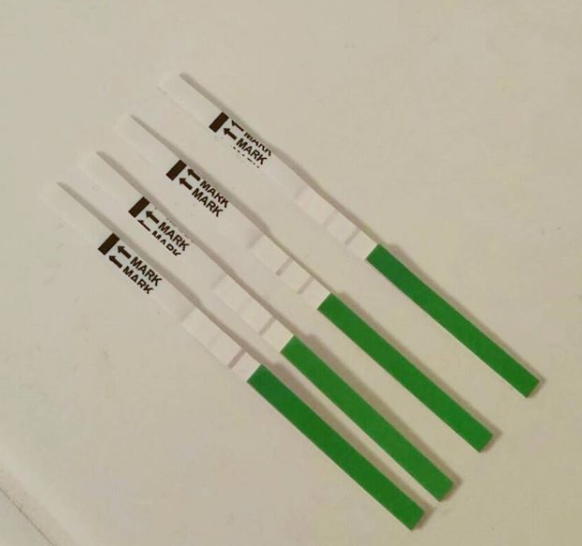
To use a test strip, the same rules apply as an ovulation predictor kit.
• Begin taking your ovulation test strip by Day 10/11 of your cycle
• Pee into a cup and insert test strip into cup of urine
• OR if you’re savvy, insert the test strip direct into the stream of urine
• Lay flat for 1-5 minutes, then read results
• A control line will show up dark for all test results
• The second test line will show up only if the LH hormone has been detected
• OPK test lines usually start faint, darkening until ovulation is reached
• Take an OPK every day until 2 dark lines appear
• Once 2 dark lines appear, it is time for intercourse!
Ovulation test strips are indeed the most cost-effective way to track your ovulation month after month. If you begin testing for LH by Day 10 of your cycle, you will be using at minimum 5 test strips by testing daily until the LH surge around Day 14. But if you ovulate later, then you may need 7 or more test strips.
Do not stop testing until you get the double dark line!
And to really pinpoint ovulation and not miss it, you may want to start testing 2-3 times per day to really test sensitively. And that puts you upwards of 20 tests per month. Buy in bulk – or take advantage of the ConceiveEasy 20 free test offer – and select all ovulation tests!

Ovulation predictor test kits are exactly what they sound like. They are kits that are put together of all the things a woman will need to track her fertile days and get comfortable using an ovulation test. Some of these kits contain booklets, DVDS, or informational items in order to get a woman used to tracking her fertile days and get her comfortable using ovulation tests in general.
Some ovulation test kits, like the one from ConceiveEasy, even contain special vitamins or supplements that women can use to make sure they are at their healthiest when they are trying to conceive, and some even come with their own basal body thermometer and basal charting kit in order to make sure that women are using multiple ways to track their fertility and chart their fertile days.
This is a great option for women who are just starting out with trying to conceive, and may not be at their most comfortable with fertility tracking just yet. These are especially good for women who are not comfortable with tracking their fertile window on their own, or for women who have irregular periods and may not have any other indication of whether or not they are even ovulating at all.

Whatever method a woman chooses, whether it be an ovulation midstream test or just ovulation test strips, it is important to remember that using the tests as directed is very important.
The main point to remember is that as long as women are doing their best and doing something to be proactive about their fertility, that is the most important thing, and the first step to helping to create a healthy and happy pregnancy. Happy ovulation tracking!
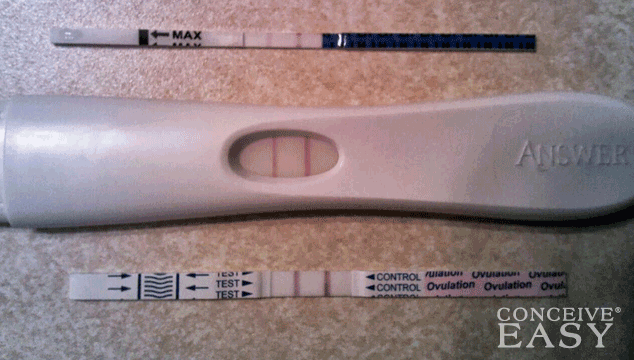



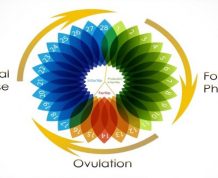

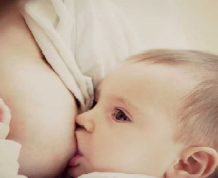





Comments